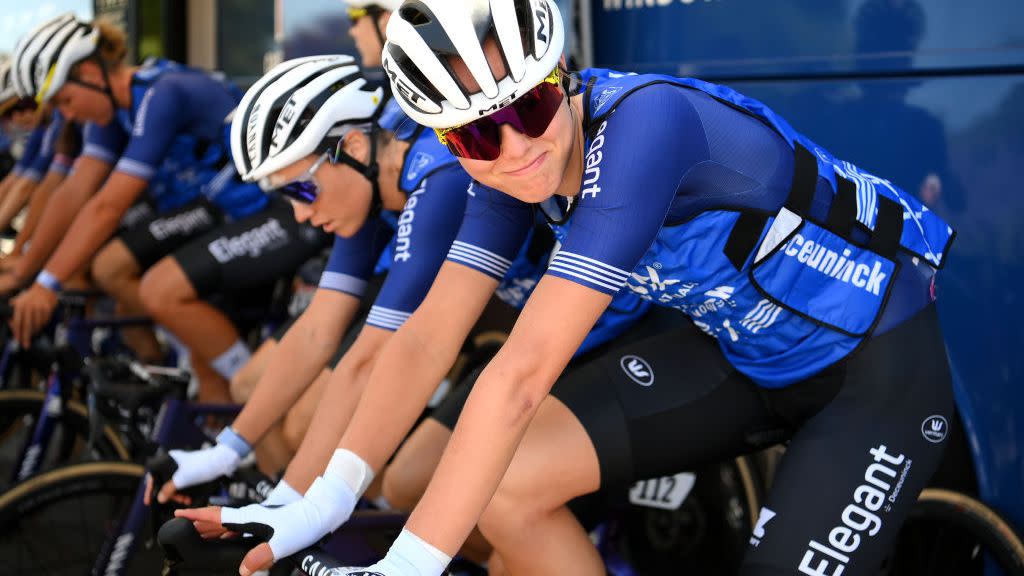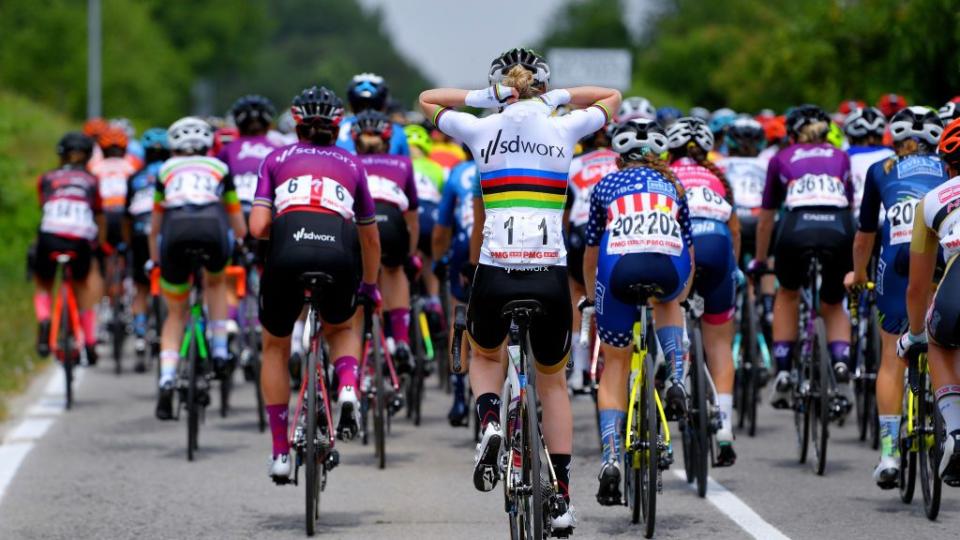Pro Cyclists Are Pre-Cooling. Are They Wasting Their Time?

If you watch bike racing regularly, you may have noticed riders warming up ahead of a race on trainers while wearing bulky looking vests. At first glance, they look a little bit like weight vests, but they’re actually cooling ice vests, and what the riders are doing when they wear them ahead of an event is known as pre-cooling.
What is pre-cooling?
When we exert ourselves through exercise of any kind, we experience an increase in core body temperature, and even extremely well conditioned pro cyclists are no different. Why does this matter? It turns out that the body heating up has an effect on athletic performance, and not the kind that athletes want.
The effects of elevated body core temperature has been shown to decrease performance in athletes, and this is something that’s been known for quite a while. A scientific review by researchers at Charles Sturt University in Australia published in the British Journal of Sports Medicine back in 2001 found that, “Precooling studies confirm that increasing body heat is a limiting factor during exercise” while also noting that the benefits don’t appear to kick in until after about 30-40 minutes of “endurance exercise.” And riding hard in a race (or otherwise!) definitely counts as endurance exercise!
And the benefits of pre-cooling have held up over time. A 2017 scientific review by researchers at Radboud University in the Netherlands and Liverpool John Moores University in the U. K. found, “The performance benefits of pre-cooling were confirmed by another meta-analysis, as pre-cooling significantly improved intermittent sprint exercise and endurance exercise performance.”
Why are pro cyclists pre-cooling?
The cooling vests are part of a pre-cooling strategy to decrease the core body temperature of the riders prior to the race, with the intention of limiting the performance losses that arise from riders overheating. Usually the vests are just one part of a bigger cooling strategy that includes cooling methods during races, such as small bags of ice that riders will stick down the back of their jerseys, and post-race cooling, like ice baths.

While cooling has become standard practice, a recent study in the Public Library of Science peer-reviewed journal reported by Cycling Weekly appears to shed some doubt on the effectiveness of pre-cooling in terms of performance benefits. According to the study’s authors, cooling vests had “no effect on performance” in trained male road cyclists.
However, the study used the average speed of a rider over the course of a 20-minute velodrome test (while also capturing heart rate and core body temperature data, riders’ rate of perceived exertion, thermal comfort and thermal sensation) and past research indicates that the benefits of pre-cooling really don’t kick in until after the body has had a chance to heat up after about the 30-minute mark of endurance exercise.
Another issue with the new study is that it’s an incredibly small sample size. Only seven trained male cyclists were studied. No women were a part of the study, which is problematic considering that men’s and women’s bodies regulate and react to heat differently. So while the recent study might provide an interesting “huh” moment, it doesn’t seem likely that it will change the pre-cooling strategies the pros are using any time soon.
You Might Also Like

